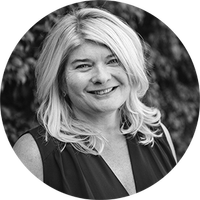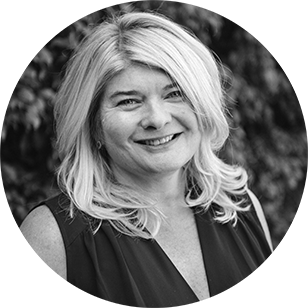How baby boomers are reinventing the retirement home
Margaritaville for retirees? A 60-and-over art colony? Today's seniors are flocking to niche communities.

No longer content to sit out their golden years in a nondescript condo, some baby boomers are looking to retire in an environment that reflects their lifelong passions and interests, and they're willing to pay for it.
Enter the niche retirement community: housing options that have very specific themes for retirees looking to stay active and engaged with kindred spirits. Some seniors are dancing the days away with fellow Parrot Heads in a Jimmy Buffett-themed community. Others are creating masterpieces with fellow artists at an art colony. Still more are taking college-level classes with other academically-inclined retirees. There's even a specific community for retired postal workers.
"People definitely want to be involved and they want to have access to continuing education, and to volunteer and to have places to socialize," Danielle Arigoni, director of Livable Communities at AARP, told The Week. "The degree to which any community is offering those amenities, I think that makes it really appealing for people."
The Week
Escape your echo chamber. Get the facts behind the news, plus analysis from multiple perspectives.

Sign up for The Week's Free Newsletters
From our morning news briefing to a weekly Good News Newsletter, get the best of The Week delivered directly to your inbox.
From our morning news briefing to a weekly Good News Newsletter, get the best of The Week delivered directly to your inbox.
For those that have the desire and ability (financial or otherwise) to settle in a niche retirement community, developers are very happy to oblige. Given the massive popularity of Jimmy Buffett's Margaritaville restaurant chain, it was probably inevitable that the 72-year-old singer would turn his attention to his aging fans. In 2017, he partnered with Minto Communities and developed Latitude Margaritaville in Daytona Beach for the "55 and better" crowd; last year it was ranked the best active adult community in the U.S. by Chicago-based 55Places.com.
Life at Latitude Margaritaville looks like one long vacation, interspersed with tennis, pickleball, and bocce; all accessible by golf cart. It has pastel-colored houses, a private beach club, a tiki-hut-surrounded pool, and a planned bandshell in the middle of the Latitude Town Square — where one imagines Buffett's iconic songs will play in between bands. There's even a dog spa called Barkaritaville. More than 300 people lined up to snag one of the community's original units.
But resort retirement doesn't come cheap. The least expensive home at Latitude is priced in the mid-$200,000s, plus a monthly association fee of about $200.00. That puts the community — and two other Latitude Margaritaville locations in Watersound, Florida and Hilton Head, South Carolina — out of reach for most retirees.
But developers of affordable housing are catching on to the trend, too. For example, Meta Housing Corporation built the Burbank Senior Artists Colony in 2003, a first-of-its-kind community offering residents 55 and over affordable housing, along with live performances and an array of lifelong learning classes. They followed it up in 2012 with a similar colony in Long Beach.
A free daily email with the biggest news stories of the day – and the best features from TheWeek.com
When the city of Los Angeles wanted to include senior housing in a new development in North Hollywood the following year, the NoHo Senior Arts Colony opened as a mixed-income community. The four-story building has 126 one- and two-bedroom apartments, 20 percent of which qualify as affordable housing ($644 per month for a two-bedroom) and 80 percent of which are market-rate (up to $2,400 per month for a two-bedroom).
Residents don't have to prove their artistic bonafides to live in the colony, but they typically come from a professional arts background.
"L.A. is an industry town for the arts and so it runs the gamut from people that were engaged in the industry or engaged in the arts during their professional career, to people who did other jobs and just gravitate to the arts after retirement," said Michelle Coulter, director of artist housing from Meta Housing.
The waiting lists for all of these communities number in the thousands, with people waiting years to get in.
"People don't leave; why would they?" Coulter said. "There just aren't affordable options that are available to them, number one, and number two, the quality of life that exists within the buildings, and the vibrancy, is quite high."
Regardless of the target demographic and price-point, active-lifestyle communities offer retirees something that is increasingly important to senior health: interaction with others.
"What we're seeing is that, as people live longer, and as they have enhanced health in their later years, they recognize the real benefits of being engaged with other people," AARP's Arigoni said. "And we've seen a greater awareness about social isolation and loneliness and the effects of that, and I think it's making people more aware and more conscious of the need to be involved."
Indeed, a 2018 AARP Foundation study found that one-third of U.S. adults aged 45 and older are lonely, and that those who are lonely or socially isolated are more likely to have health problems.
Arigoni added that the best communities — niche, retirement, or otherwise — are very intentional about designing public spaces where residents can casually interact.
"Successful communities across the U.S. and frankly, historically, have always been those places where you're going to bump into your neighbor as you're doing your daily activities or where there's a public space that people are drawn to watch the sunset, or to listen to music," she said. "It's a hunger for human connections."
Jaimie Seaton is a freelance writer who lives in New Hampshire. She reported for the Sunday Times of London and Newsweek from South Africa and Thailand, and has written for or edited numerous publications around the world. Her bylines include New York magazine, Glamour, O, Pacific Standard, and she's a frequent contributor to The Washington Post. She looks forward to retiring abroad.



